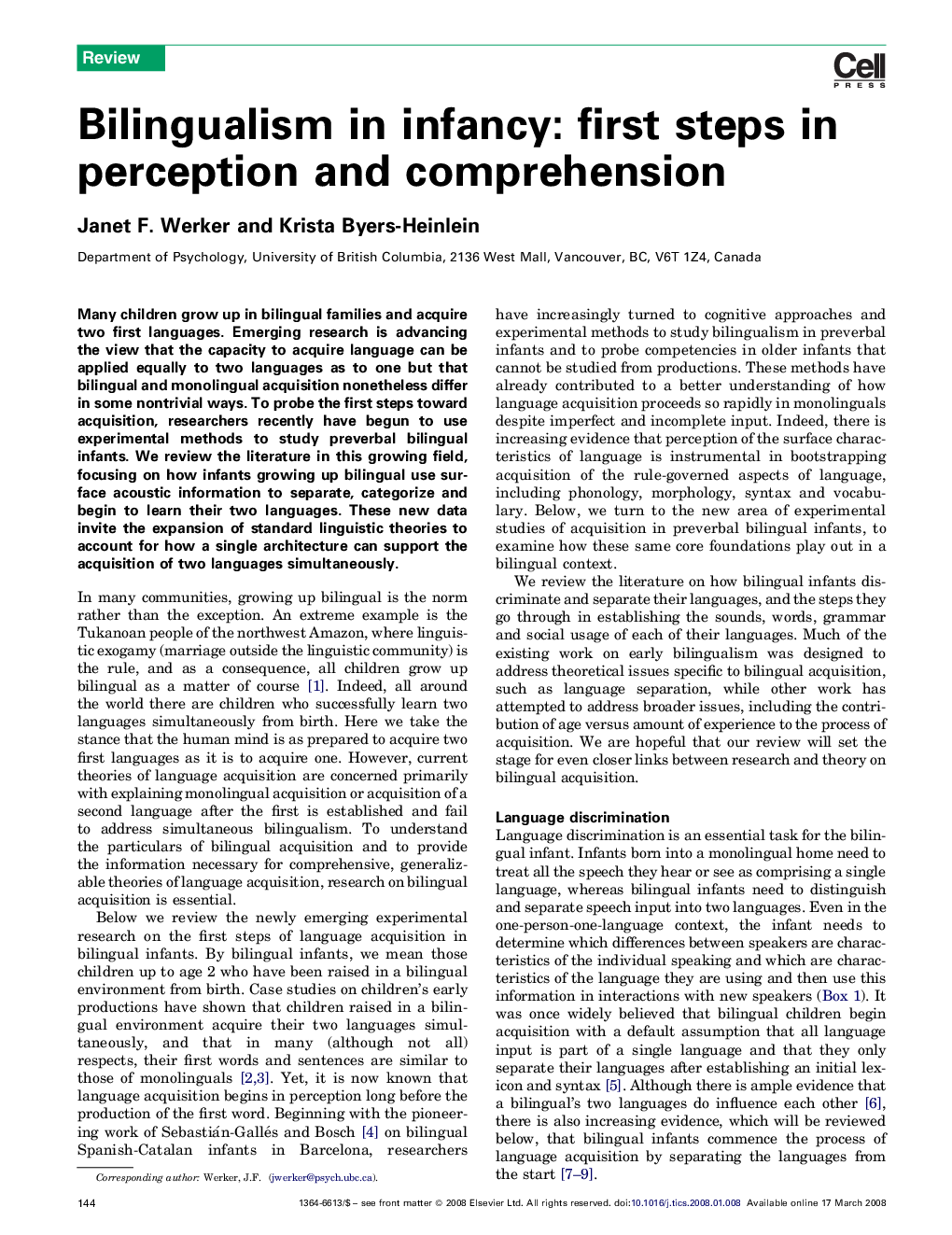| Article ID | Journal | Published Year | Pages | File Type |
|---|---|---|---|---|
| 142169 | Trends in Cognitive Sciences | 2008 | 8 Pages |
Many children grow up in bilingual families and acquire two first languages. Emerging research is advancing the view that the capacity to acquire language can be applied equally to two languages as to one but that bilingual and monolingual acquisition nonetheless differ in some nontrivial ways. To probe the first steps toward acquisition, researchers recently have begun to use experimental methods to study preverbal bilingual infants. We review the literature in this growing field, focusing on how infants growing up bilingual use surface acoustic information to separate, categorize and begin to learn their two languages. These new data invite the expansion of standard linguistic theories to account for how a single architecture can support the acquisition of two languages simultaneously.
